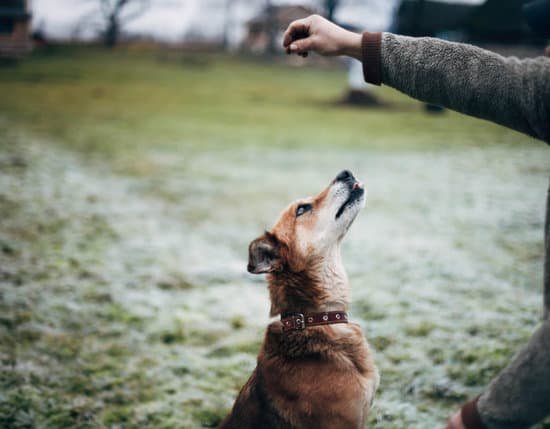Having a well-trained dog that responds to recall commands is essential for their safety and your peace of mind. Whether you’re at the park, the beach, or simply in your backyard, the ability to call your dog back to you can prevent them from getting into dangerous situations. In this article, we will explore the key principles of dog recall training and offer a step-by-step guide to help you teach your furry friend reliable recall commands.
Teaching your dog recall commands can be challenging, especially if they are easily distracted or have a strong prey drive. We will discuss common challenges in teaching recall to dogs and provide tips for troubleshooting these issues. Additionally, we will look at how to choose the right training method based on your dog’s personality, as individualized approaches often yield the best results.
Recall training is not only about obedience; it’s about building a strong bond with your dog based on trust and communication. Consistency and patience play a crucial role in successful recall training, and we’ll delve into the importance of these factors. With our guidance, you’ll learn how to reinforce recall behavior, incorporate distractions into training sessions, and create a lasting connection with your canine companion through effective recall training techniques.
Common Challenges in Teaching Recall to Dogs
Teaching recall to dogs can be a challenging and often frustrating process for many pet owners. One of the most common challenges in dog recall training is dealing with distractions. Dogs are naturally curious beings, and they can easily become distracted by various sights, sounds, and smells in their environment. This can make it difficult for them to focus on and follow recall commands, especially when they are off-leash.
Another challenge in teaching recall to dogs is overcoming fear or anxiety. Some dogs may have had negative experiences in the past that make them hesitant to respond to recall commands. Others may simply be fearful of leaving their current surroundings or hesitant to approach their owners. Overcoming these emotional barriers and building trust and confidence in the dog-owner relationship is essential for successful recall training.
Additionally, inconsistency in training methods and reinforcement can present a significant challenge in teaching recall to dogs. If different family members or trainers use varying techniques or are not consistent with the reinforcement of recall commands, the dog may become confused and less likely to respond reliably. It’s important for all involved parties to be on the same page when it comes to training methods and reinforcement strategies for effective dog recall training.
In order to address these common challenges in teaching recall to dogs, understanding the importance of consistency, patience, and positive reinforcement is crucial. By acknowledging these challenges and implementing appropriate strategies, pet owners can overcome these obstacles and successfully teach their dogs reliable recall behavior.
Key Principles of Recall Training
When it comes to dog recall training, there are several key principles that every pet owner should keep in mind. First and foremost, it is essential to understand that recall training requires patience, consistency, and positive reinforcement. Dogs respond best to rewards and praise, so incorporating these elements into the training process is crucial.
Another key principle of dog recall training is understanding the individual personality and behavior of your dog. Every dog is unique, and what works for one may not work for another. It’s important to tailor your training approach based on your dog’s personality, energy level, and breed characteristics.
Additionally, establishing a strong bond with your dog is foundational to successful recall training. Building trust and a positive relationship with your pet will make them more responsive to training commands. Ultimately, recall training should be a collaborative effort between you and your furry friend, rooted in mutual respect and understanding.
| Principles | Description |
|---|---|
| Patience | Training requires patience for positive results. |
| Individuality | Train based on the unique characteristics of each dog. |
| Bonding | Establishing a strong bond improves response to commands. |
Choosing the Right Training Method for Your Dog’s Personality
Understanding Your Dog’s Personality
When it comes to training your dog, it’s important to consider their unique personality traits. Some dogs may be highly food-motivated, while others may be more responsive to play or praise. Understanding what motivates your dog will help you choose the right training method for their specific personality.
Positive Reinforcement vs. Negative Reinforcement
One of the key decisions you’ll need to make when choosing a training method is whether to use positive reinforcement or negative reinforcement. Positive reinforcement involves rewarding your dog for good behavior, while negative reinforcement focuses on correcting unwanted behavior. Most experts agree that positive reinforcement is more effective and creates a stronger bond between you and your dog.
Using the Right Tools
There are various tools and techniques available for recall training, including long lines, clickers, treats, and harnesses. It’s important to choose the right tools based on your dog’s personality and preferences. For example, if your dog is easily distracted by smells during outdoor recall training, using high-value treats or a long line may be beneficial in keeping their attention focused on you.
By understanding your dog’s personality, utilizing positive reinforcement techniques, and choosing the right tools, you can ensure that your recall training efforts are tailored to meet your dog’s individual needs and set them up for success in mastering recall commands.
Step-by-Step Guide to Teaching Recall Commands
When it comes to dog recall training, a step-by-step approach can make the process much more effective. By breaking down the training into manageable tasks, both you and your dog can work together to achieve successful results. Here are some steps to consider when teaching recall commands to your furry friend:
1. Start with Basic Commands: Before diving into recall training, ensure that your dog has a good grasp of basic commands such as “sit,” “stay,” and “come.” These commands lay the foundation for successful recall training and help establish a clear line of communication between you and your dog.
2. Choose a Distraction-Free Environment: When introducing recall commands, start in a quiet, familiar environment with minimal distractions. This will allow your dog to focus on the training without being overwhelmed by external stimuli.
3. Use Positive Reinforcement: Positive reinforcement is key in dog recall training. When your dog responds to the recall command, reward them with treats, praise, or playtime. This positive association will encourage them to respond eagerly in the future.
4. Gradually Increase Distance: Begin the training by calling your dog from a short distance away. As they become more proficient at responding to the recall command, gradually increase the distance between you and your dog. This progressive approach helps build confidence and reliability in their response.
5. Practice Regularly: Consistent practice is essential for reinforcing recall behavior. Set aside dedicated time for recall training sessions and incorporate it into everyday activities such as walks or playtime.
By following these steps and incorporating them into your regular training routine, you can effectively teach your dog reliable recall commands that will strengthen your bond and keep them safe in various situations.
Troubleshooting Common Recall Training Issues
Understanding Your Dog’s Behavior
One of the most common issues in recall training is understanding your dog’s behavior. Every dog is unique, and their responses to training may vary. Some dogs may be easily distracted, while others may be more stubborn or fearful. It’s important to observe your dog’s behavior and tailor your training approach accordingly.
Addressing Lack of Motivation
Another common issue that dog owners face during recall training is the lack of motivation in their dogs. If your dog doesn’t seem interested in responding to recall commands, it could be due to a lack of motivation or reinforcement. In this case, it’s essential to find what motivates your dog – whether it’s treats, toys, or positive reinforcement – and use that to encourage them to come when called.
Dealing With Fear or Anxiety
Fear and anxiety can also hinder effective recall training. If your dog shows signs of fear or anxiety when being called back to you, it’s crucial to address these underlying emotions before continuing with the training. Consider working with a professional trainer who can help you identify the root cause of your dog’s fear or anxiety and provide guidance on how to overcome it during recall training sessions.
Despite these challenges, with patience, consistency, and proper understanding of your dog’s behavior, you can successfully troubleshoot common recall training issues and improve your dog’s response to recall commands. Remember that every dog is different, so it may take time and effort to find the right approach that works for your furry friend.
Tips for Reinforcing Recall Behavior
Once you have successfully taught your dog the recall command, it is important to reinforce this behavior to ensure that it becomes a reliable response. Reinforcement can help strengthen the bond between you and your dog while also making the recall command more automatic in various situations.
One effective way to reinforce recall behavior is through positive reinforcement. This involves rewarding your dog with treats, praise, or playtime whenever they respond to the recall command. By associating the act of coming when called with something pleasant, your dog is more likely to continue obeying the command in the future.
Consistency is also crucial when reinforcing recall behavior. It is important to consistently reward your dog every time they respond to the recall command, especially during the initial stages of training. This consistency helps solidify the association between obeying the command and receiving a reward, making it more likely that your dog will continue to come when called.
In addition, incorporating regular practice sessions into your routine can help reinforce recall behavior. Regular practice not only allows your dog to continue honing their response to the recall command but also serves as a reminder of what is expected from them. Practice sessions also provide opportunities for reinforcement, helping to maintain and strengthen their recall behavior over time.
The Role of Consistency and Patience in Successful Recall Training
Consistency and patience are two key factors in successful dog recall training. Without these, it can be difficult to achieve the desired results when teaching your dog to come when called. Here are some important points to consider:
1. Consistency: One of the most important aspects of successful recall training is being consistent in your approach. This means using the same command or cue every time you want your dog to come to you. Whether it’s “come”, “here”, or any other word, using the same command consistently will help your dog understand what is expected of them.
2. Patience: Recall training takes time and patience. It’s essential to remain patient and avoid getting frustrated if your dog doesn’t respond as quickly as you’d like. Each dog learns at their own pace, and it’s important to remain calm and patient throughout the process.
3. Establishing a routine: Creating a routine for recall training can also help establish consistency for your dog. Whether it’s practicing at the same time each day or in the same location, having a routine can help reinforce the recall behavior.
4. Positive reinforcement: Using positive reinforcement, such as treats or praise, can also contribute to successful recall training. When your dog responds to the recall command, reward them immediately with their favorite treat or lots of praise.
5. Avoid punishment: Lastly, it’s important to avoid punishing your dog if they don’t respond to the recall command right away. Punishment can have a negative impact on your dog’s willingness to come when called and can hinder their progress in recall training.
By incorporating these principles into your recall training regimen, you can increase the likelihood of success and build a strong bond with your furry friend based on trust and mutual understanding.
Incorporating Distractions Into Recall Training
When it comes to dog recall training, one of the most important aspects to consider is how to incorporate distractions into the training process. Distractions are inevitable in real-life situations, and it is crucial for your dog to be able to recall reliably even when there are other stimuli present. By gradually introducing distractions into their recall training, you can help your dog build a strong foundation and improve their responsiveness in various environments.
One key principle of incorporating distractions into recall training is to start with minimal distractions and gradually increase the level of difficulty as your dog progresses. Begin in a quiet and familiar environment where your dog is comfortable, such as your backyard or a quiet park with few people and minimal noise.
Once your dog consistently responds to the recall command in these settings, gradually introduce mild distractions, such as another person walking by or a light noise in the background.
It’s essential to remain patient and consistent throughout this process, as rushing to introduce too many distractions too quickly can overwhelm your dog and hinder their progress. Additionally, always use positive reinforcement and rewards when your dog successfully recalls in the presence of distractions.
This will help them understand that responding to the recall command even amidst distractions is highly rewarding, further strengthening their recall behavior. By following these principles and gradually increasing the level of distractions, you can effectively train your dog to recall reliably in various real-life scenarios.
Building a Strong Recall Bond With Your Dog
In conclusion, building a strong recall bond with your dog is crucial for their safety and your peace of mind. By understanding the importance of dog recall training, you can overcome common challenges and implement key principles to effectively teach recall commands to your furry friend. It is essential to choose the right training method that aligns with your dog’s personality and follow a step-by-step guide to ensure successful recall training.
Consistency and patience play a significant role in achieving success with dog recall training. Troubleshooting common issues and reinforcing recall behavior through positive reinforcement will help encourage the desired response from your dog. Additionally, incorporating distractions into recall training will prepare your dog for real-life scenarios where they need to respond promptly to your command.
Overall, by following the tips and techniques outlined in this article, you can not only teach your dog effective recall but also strengthen the bond between you and your canine companion. Remember that successful recall training takes time and effort, but the benefits of having a reliable and responsive dog are well worth the investment in training. With dedication and perseverance, you can create a strong recall bond with your dog that will last a lifetime.
Frequently Asked Questions
How Do I Train My Dog to Recall?
Training your dog to recall involves using positive reinforcement and repetition. Start by using a long leash in a quiet area, call your dog’s name and use a cue word like “come”, then reward them when they come to you.
What to Do When Your Dog Ignores Your Recall?
If your dog ignores your recall, avoid scolding or punishing them as it can create negative associations. Instead, work on strengthening the recall command with more training sessions and higher value rewards to motivate your dog to come when called.
What Words Should You Recall Your Dog?
When recalling your dog, it’s important to use clear, consistent words that they can easily recognize. Simple words like “come” or their name can be effective cues for calling your dog back to you. Avoid using multiple different recall commands as it can confuse your pet.

Welcome to the blog! I am a professional dog trainer and have been working with dogs for many years. In this blog, I will be discussing various topics related to dog training, including tips, tricks, and advice. I hope you find this information helpful and informative. Thanks for reading!





